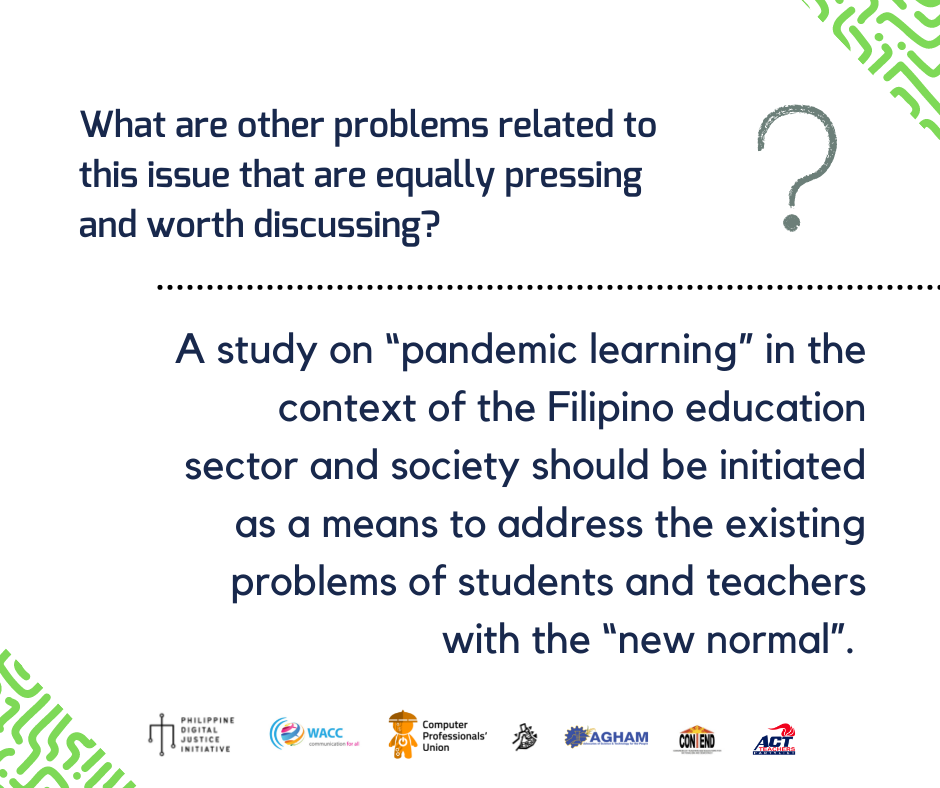Through the Digital Lens 3, held on June 26, 2021, is part of the series of consultations of the initiative aiming to gather insights, opinions, suggestions, and possible resolutions from the vital stakeholders of digitalization and betterment of the ICT ecosystem in the Philippines. In this event, the Philippine Digital Justice Initiative invited several organizations from the education sector (including the AGHAM Educators, AGHAM Youth, and CONTEND UP) to answer the following pressing issues in digitalization affecting the workers:
- Inaccessibility and the Digital Divide
- Proprietary Platforms and Knowledge
- Digital Censorship and Surveillance
- Rise of Misinformation
Inaccessibility and Digital Divide

Inaccessibility and the Digital Divide have been a reality in the Philippines for several years now. With the pandemic forcing most of the Filipinos to do things online, how do members of the education sector face the longstanding and new challenges?
Before the pandemic, what were the issues faced by the education sector regarding inaccessibility of digital space?
Even before the pandemic, the digital divide is real among students and educators. There is unevenness in terms of access to means of communication, content production, access to digital space, and lack of support from responsible institutions.
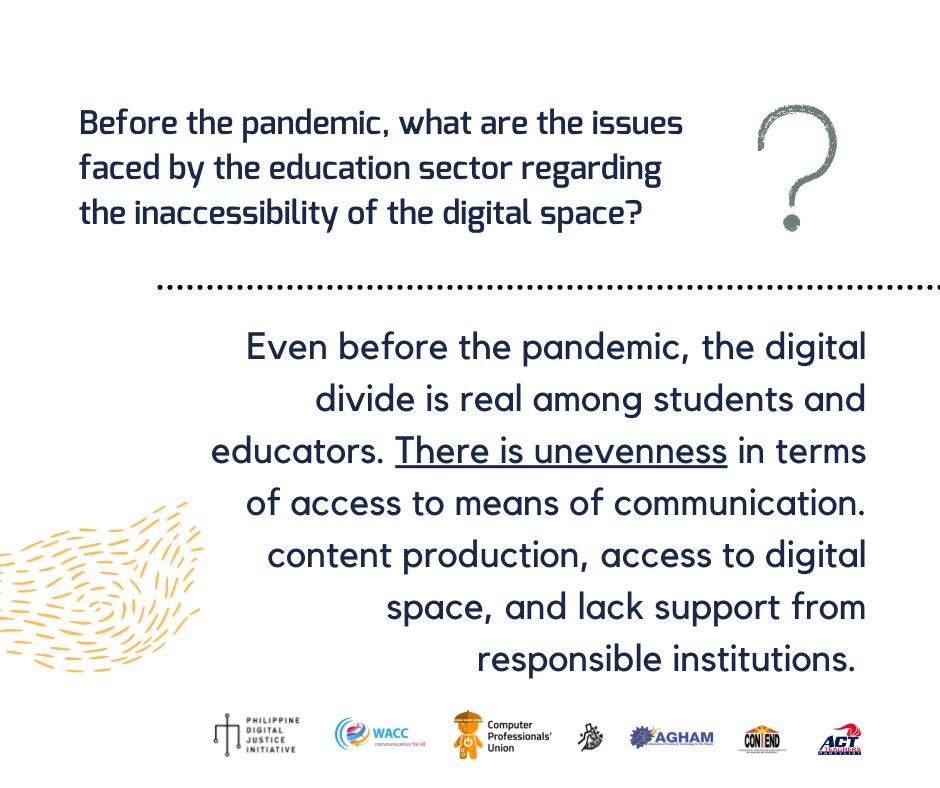
How did the CoViD-19 pandemic exacerbate the problem of the digital divide for the education sector in general?
The pandemic has exacerbated the existing issues on the digital divide, surveillance, and commodifaction of data and information. Public schools were not given the immediate and necessary support while some private schools were forced to close.
With the abrupt shit to online classes, students will become more prone to abuse in online spaces especially if we consider that the online safety index in the Philippines is really low. Worse, the majority of the students are not equipped with digital safety skills to protect themselves.
There is also an assumption from school institutions that all students have equal access to gadgets and other necessary technologies. How would the students who rely on the computer facilities of their schools fare on this type of setup?
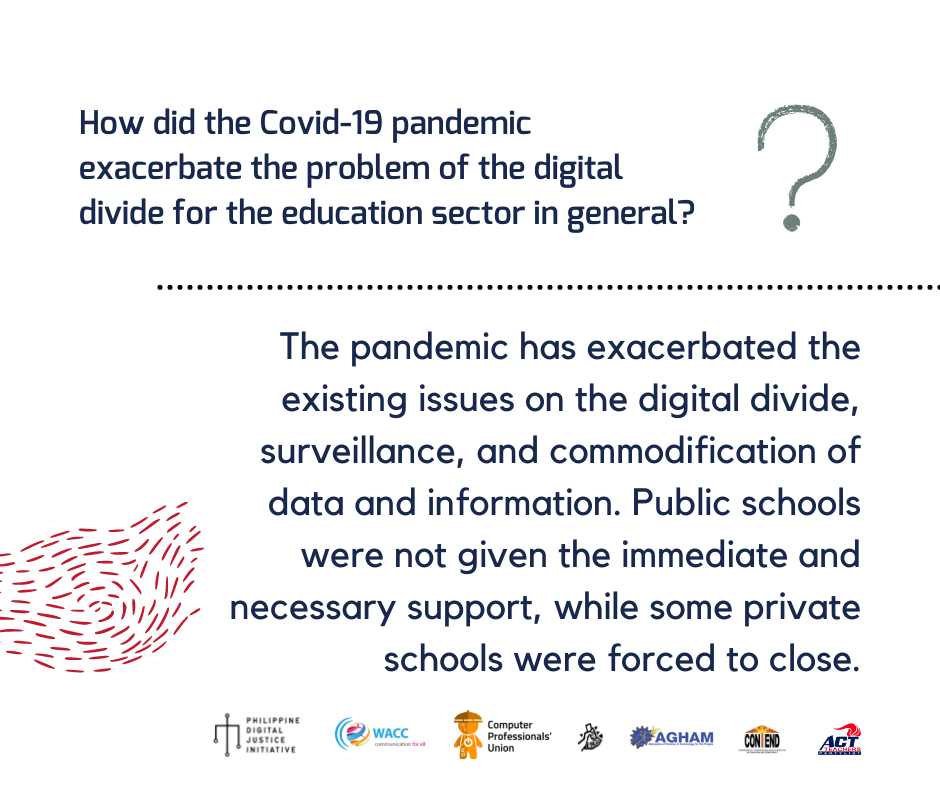
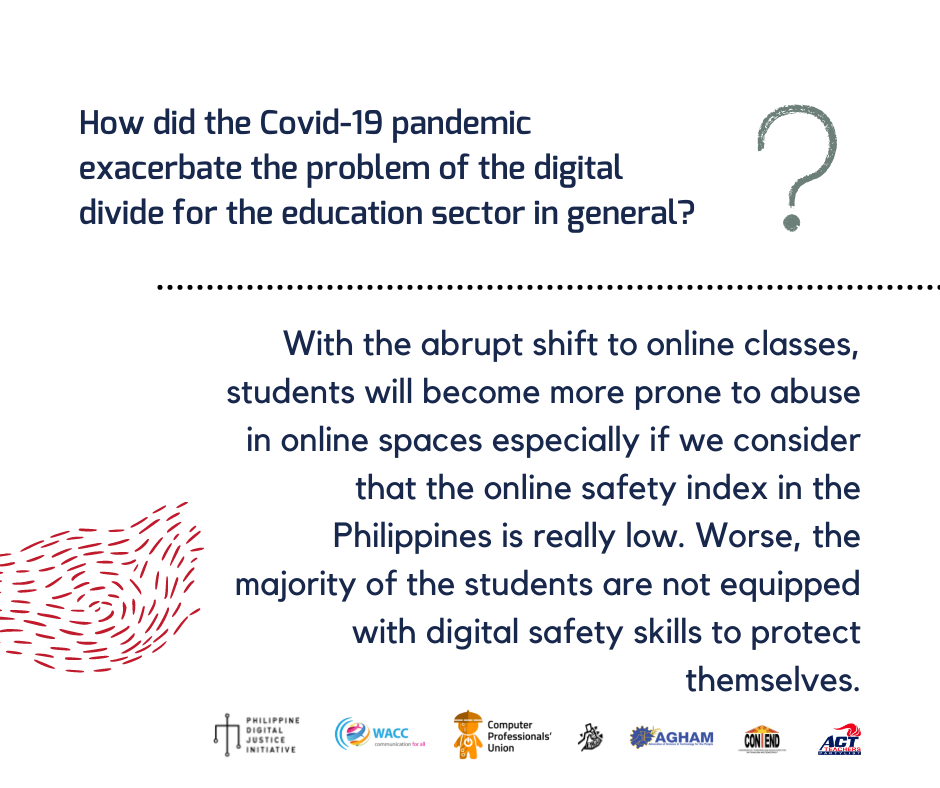
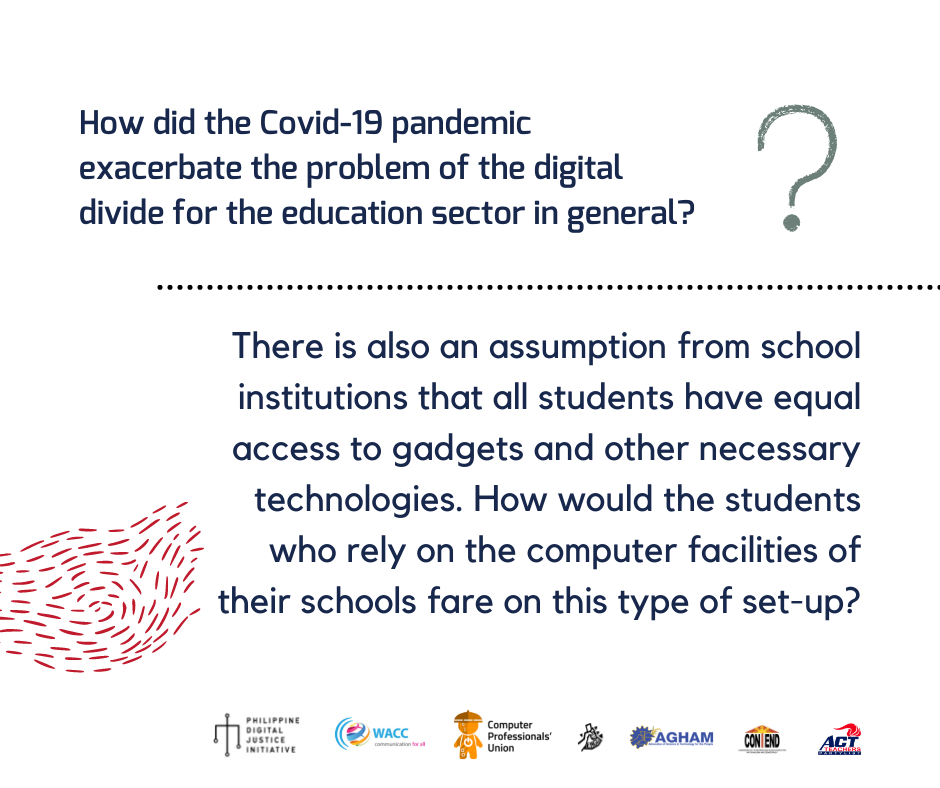
What are your recommended short-term and long-term solutions to address these problems?
The government should ensure that no students will be left behind, which means that there should be enough and immediate resources for gadgets if going online would be the only option for studying. In addition, institutional support for learners and teachers who contracted CoViD-19 should be shouldered by the government.

What are other problems related to this issue that are equally pressing and worth discussing?
The digital divide, in relation to the pandemic, is now seen by the government as a stop-gap, a temporary condition. That is why the Department of Education (DepEd) is keen to resume face-to-face classes in the next school opening. However, it appears that the mixed mode of learning should be the way to go.
We have witnessed how the social and economic inequalities have disadvantaged a lot of students. Many teachers and students do not have access to learning resources. They are unable to deliver their research in their academic institutions. We should be demanding a more comprehensive way of support.
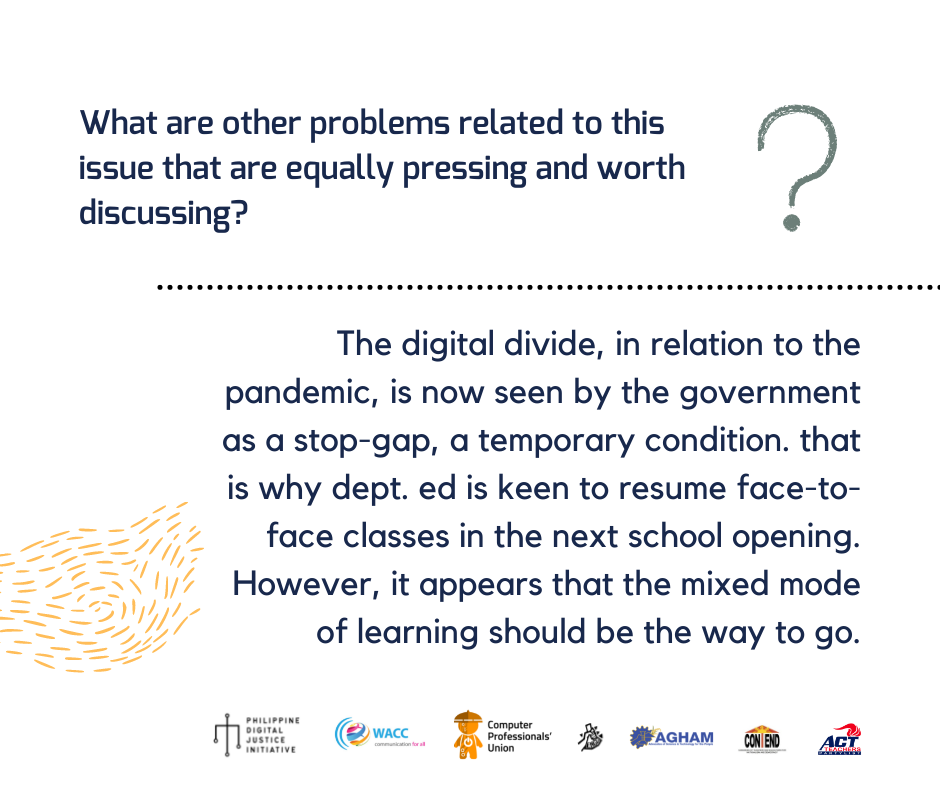
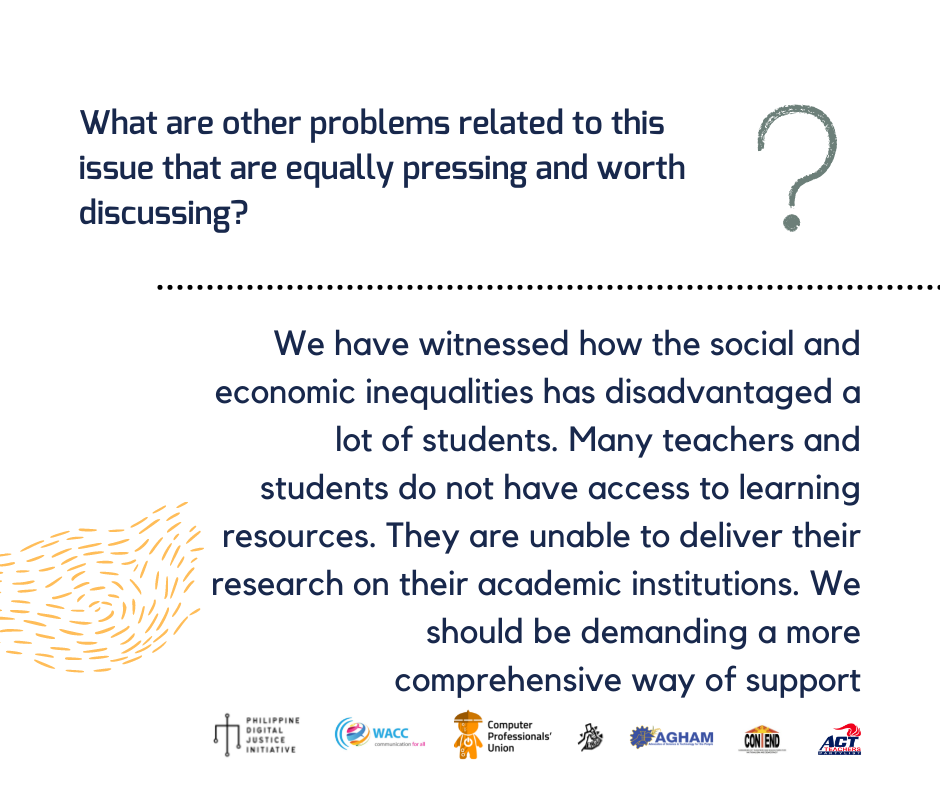
Proprietary Platforms and Knowledge
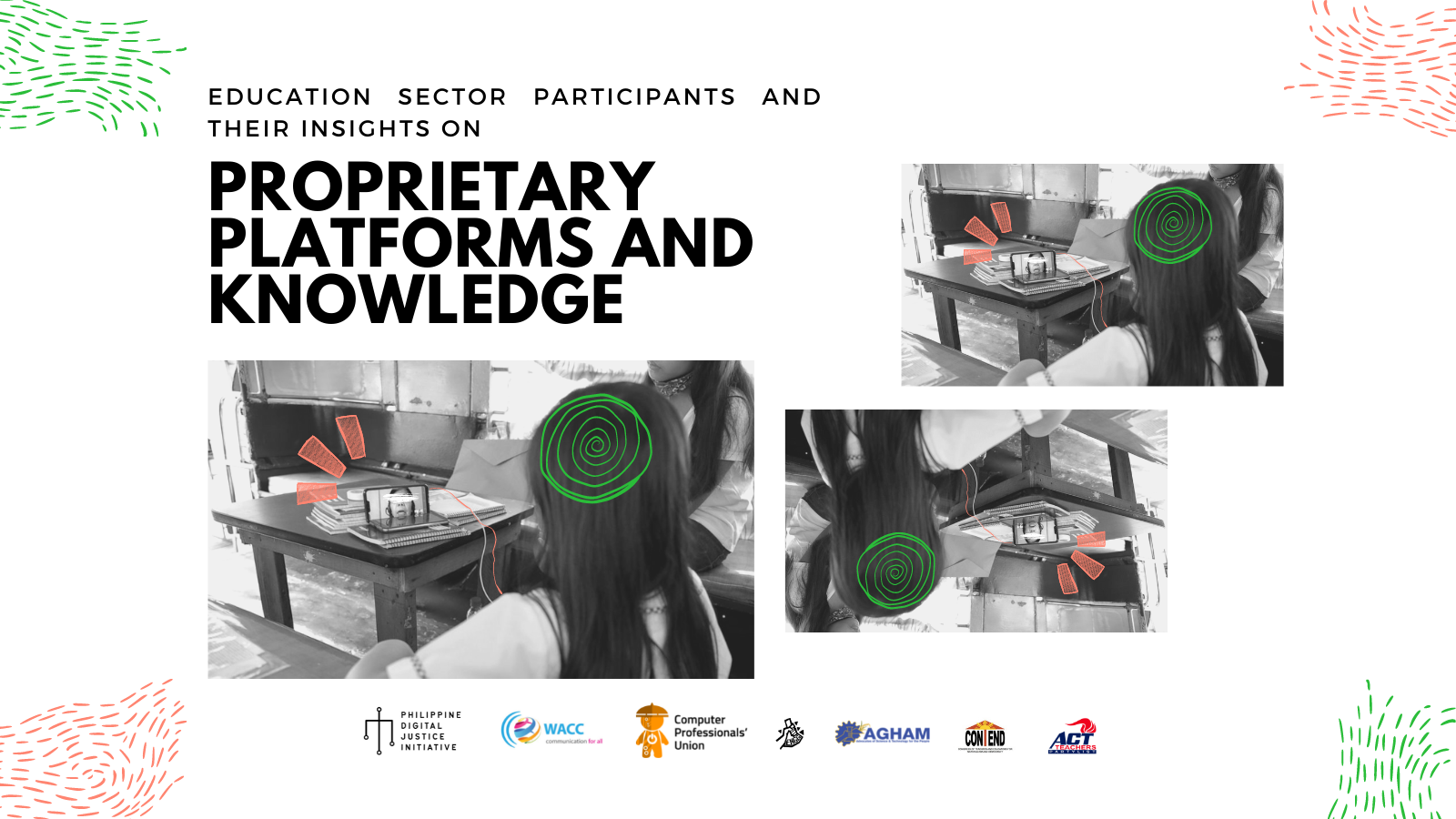
Software and online applications are sometimes challenging and overwhelming to use, even for professional adults. Although the youth today are more exposed to technologies than the previous generations, the digital divide and the unexpected shift to digital space have left behind the majority that has no access, enough digital literacy, and no connection to the Philippine ICT at all.
What are the common problems that educational institutions encounter with using digital platforms in classes and other educational activities?
Students and teachers are often bombarded with a plethora of software that is needed to be learned—even the DepEd use various learning management systems (LMS).
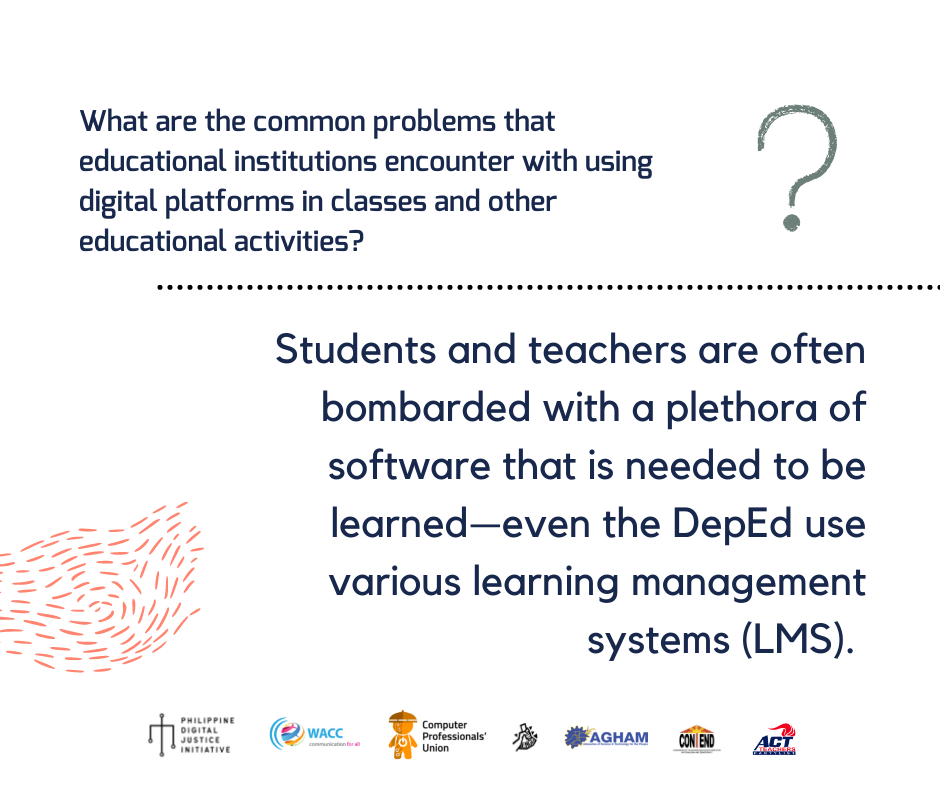
What are the pressing concerns that the educational sector has with regard to the data and privacy policies of online platforms?
Due to the lack of learning management systems (LMS), teachers and students resort to social media applications which have implications on privacy, commodification of details, etc.
“Screenshot” is just a function key in a person’s computer or phone, but there are times wherein students take screenshot/s of the class without the permission of others. This violates privacy if there is no consent given from the people involved. This questions the boundary between public and private.
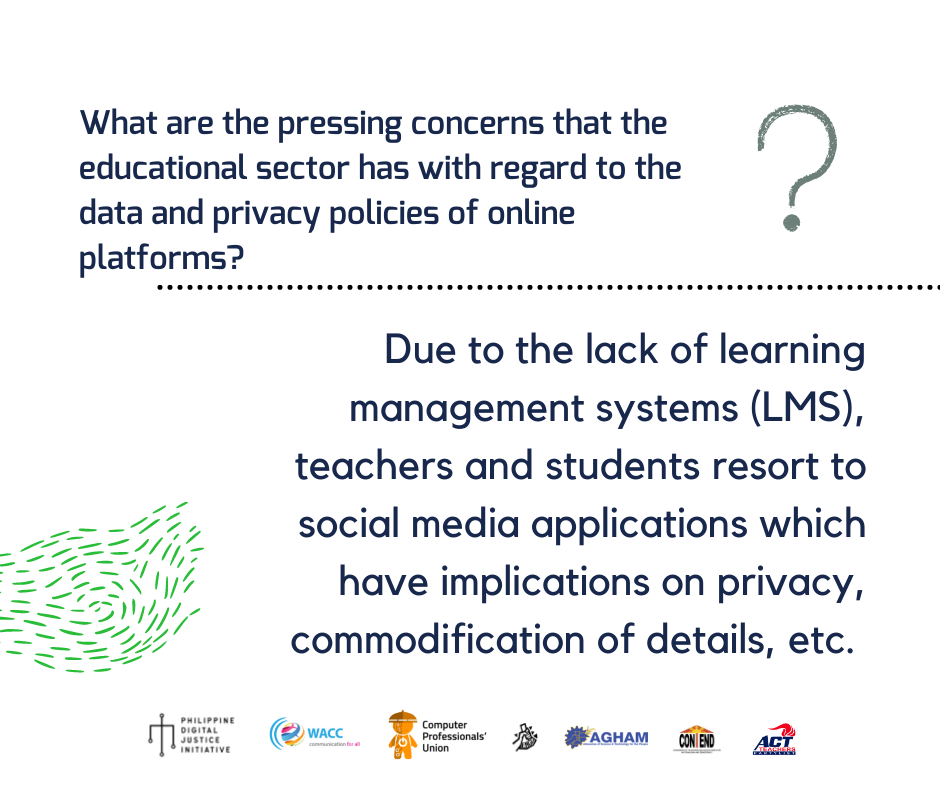
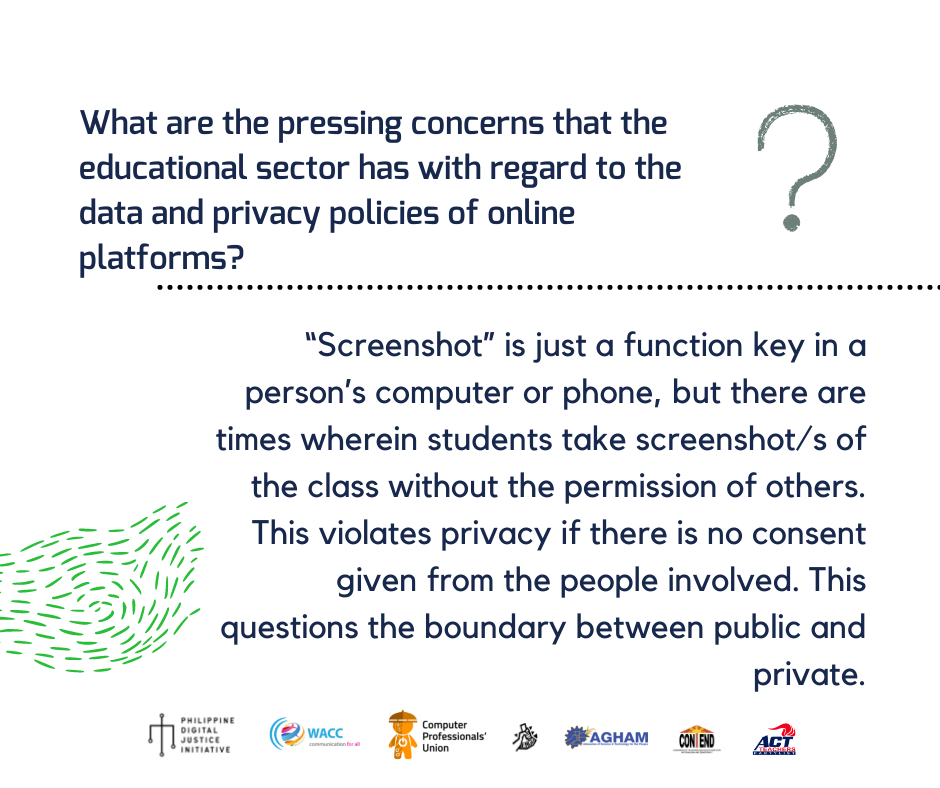
With regards to the issue of proprietary platforms, what are your recommended short-term and long-term solutions and initiatives to properly address these problems?
If you are a teacher, you have to anticipate what is going to happen in your classroom. At the start of the school year, there should be a set of rules in relation to privacy, ethical issues relating to surveillance. It is good to create ethical guidelines/code of ethics for the use of digital spaces for educators.
It is better if there will be a standardized classroom etiquette in digital platforms for education—whether it would come from the responsible government agency or associations of students and educators.

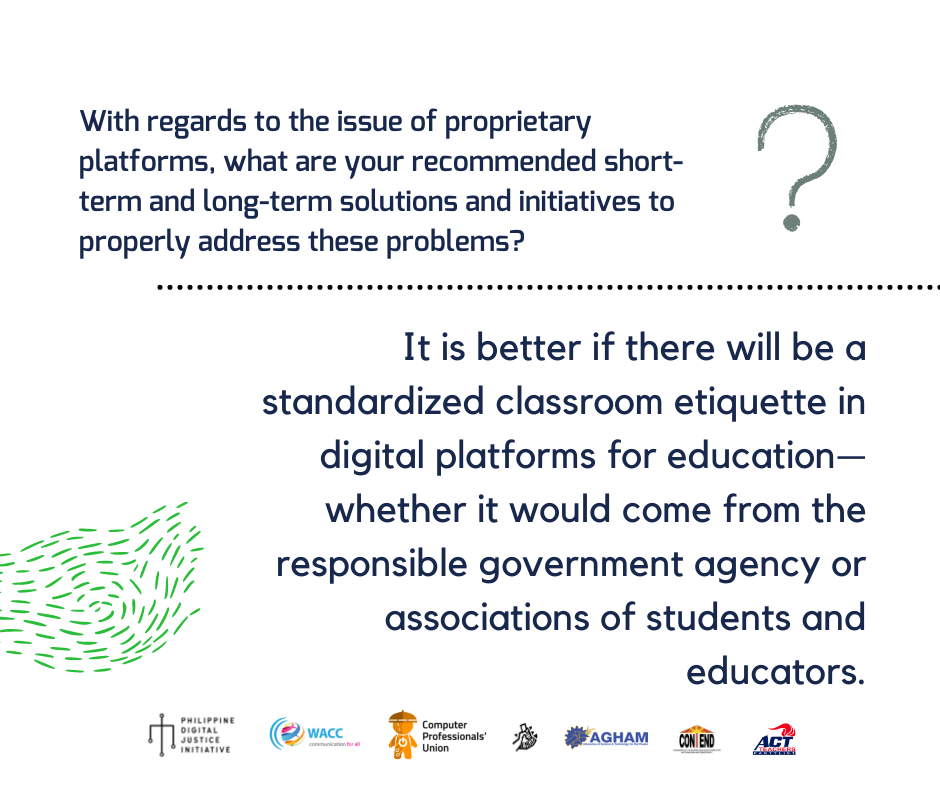
Digital Censorship and Surveillance
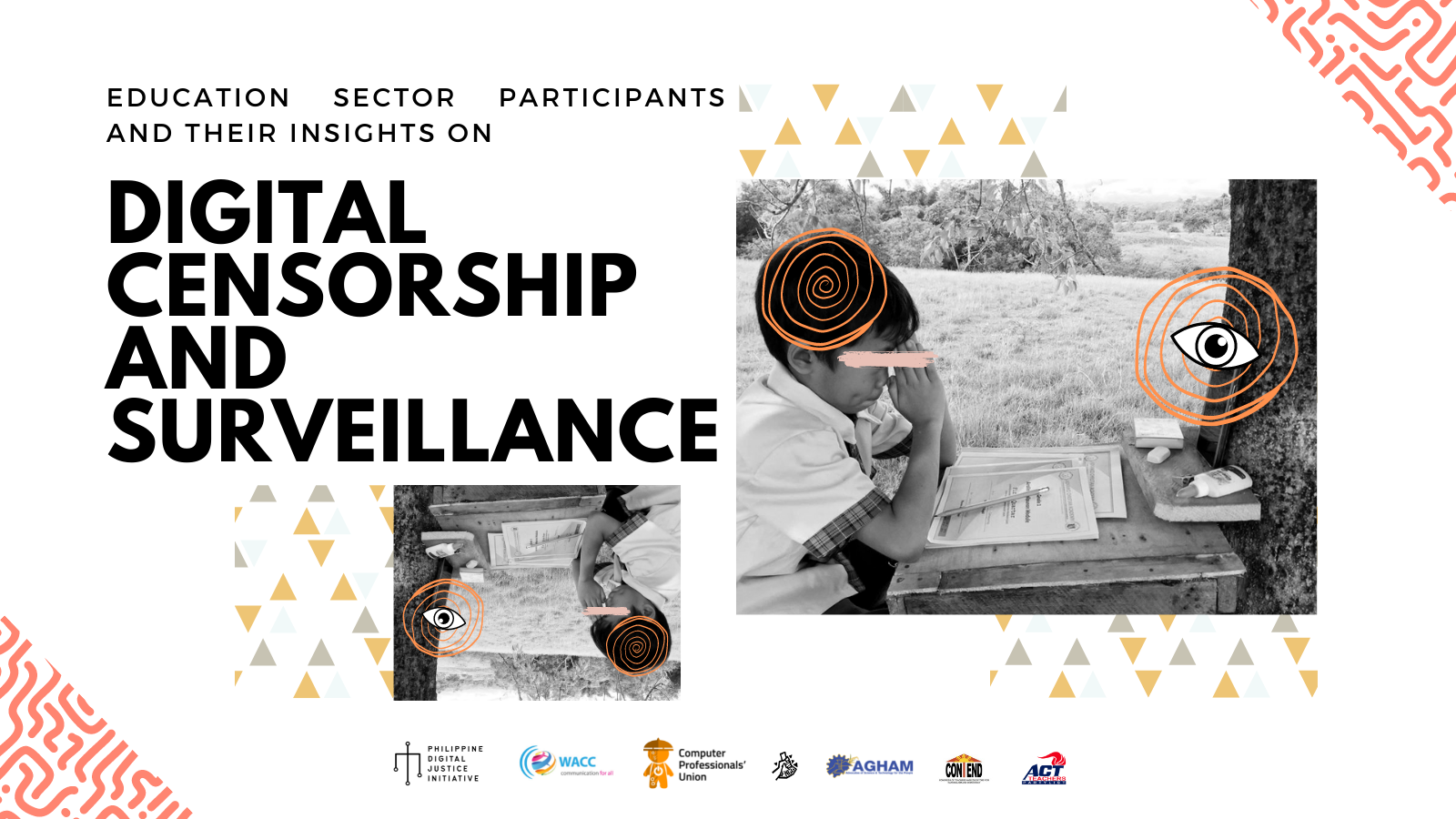
With the sudden shift to online set-up, students and teachers tend to connect, communicate and conduct school-related activities on popular and widely-accessible online platforms, specifically social media. This resortment results in the delineation of the personal, academic, and professional digital space of both students and teachers, which can affect their privacy, security, and freedom of expression. In this sense, what could possibly be the issues that the students and teachers faced with regards to digital censorship and surveillance under this new set-up, which is also the age where the “offline” and “online” persona has become inseparable?
What are the major concerns of the education sector with regard to digital censorship ang surveillance (on their social media, for example) from education institutions themselves?
We are not yet using proctoring apps online although this exists in other countries already. In the Philippines, there is some kind of approximation of this. You have to spend 2 hours in front of the camera since the default setup is face-to-face and the camera would serve as the eye. Surveillance mechanism as a form of control. Education is not viewed as democratic in that you can exercise your agency in learning. Proctoring apps have an assumption of malice—trust is already eroded. Students are not going to be honest. I don’t think that’s acceptable and that should be discouraged.
How do we make the platforms accountable? There are certain platforms that are built for surveillance. It’s so easy to track people for control.

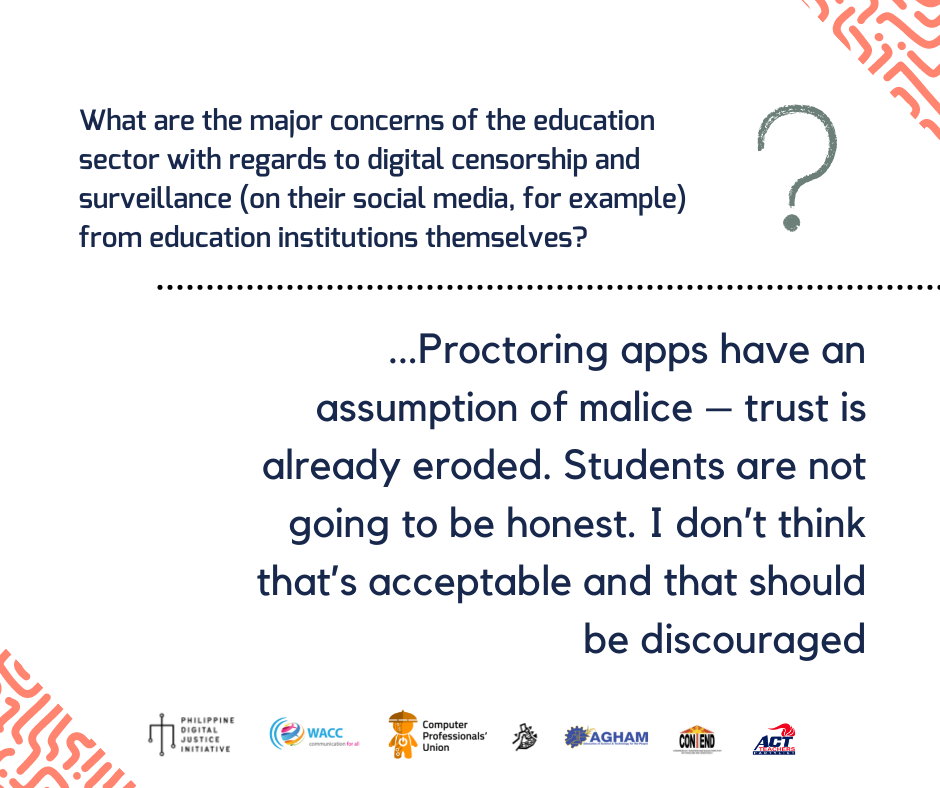
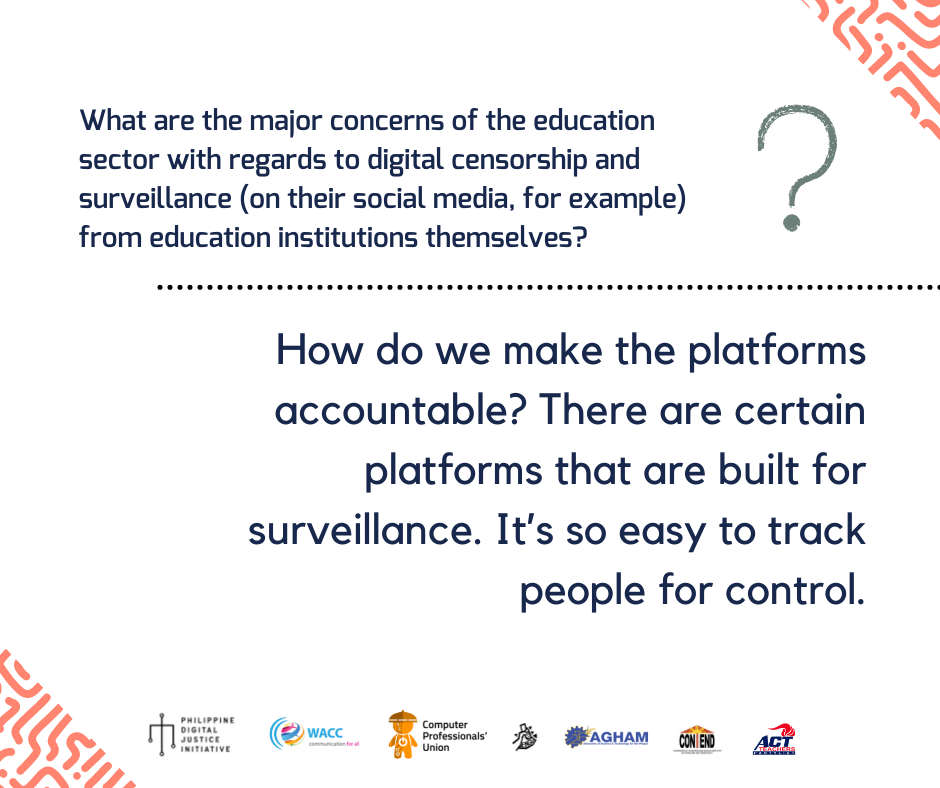
Can you cite an example wherein the privacy, security, and other sensitive aspects of online learning have been affected by digital censorship and/or surveillance?
When I was in high school, the school admin surveilled the social media of the student in order to detect and solve cases of bullying. But it eventually became an avenue and means of the school to control the statements and opinions of the students that may be against the school.

What are your short-term and long-term recommended solutions to address this problem?
Students should not be required to turn on their cameras during classes. This, however, creates a dilemma on the part of the teacher as seeing the faces of the students motivates them and makes teaching online feel less robotic.
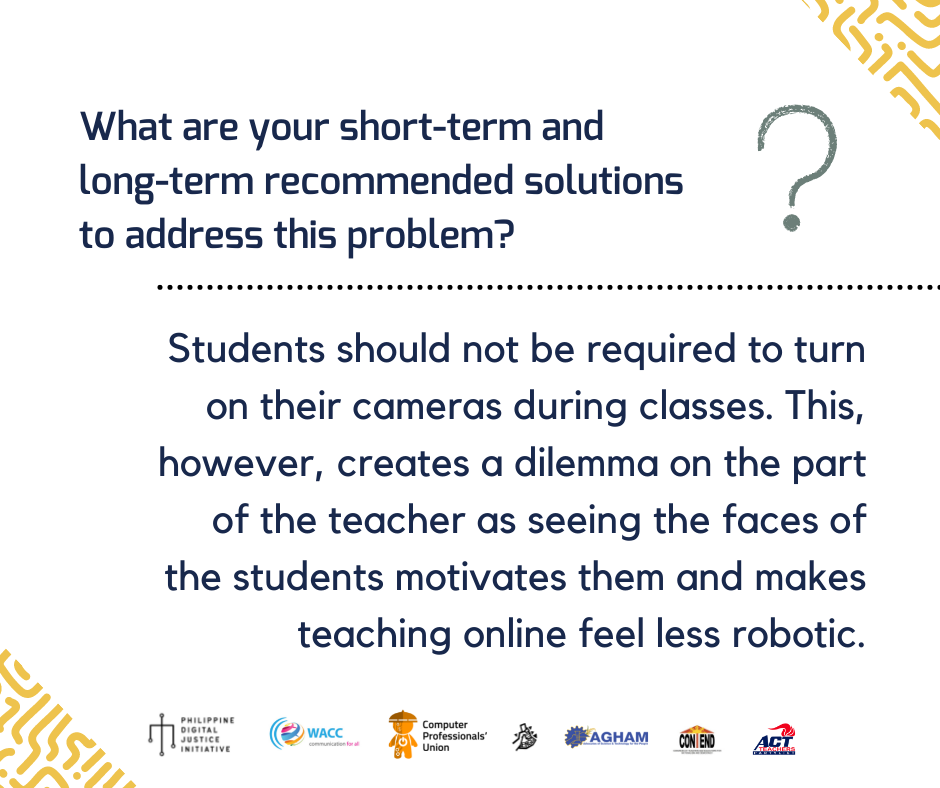
What are other problems related to this issue that are equally pressing and worth discussing?
One of the worries of teachers and professors is how students can now game Turnitin in a way that it is a cut and paste enterprise. Therefore, refraining from overreliance on machines and still involving the human aspect is one way to safeguard the education system.
The Anti-Terror Law leaves the education sector especially students and teachers vulnerable to all sorts of dangers, especially the students and teachers who are critical and promote critical thinking.
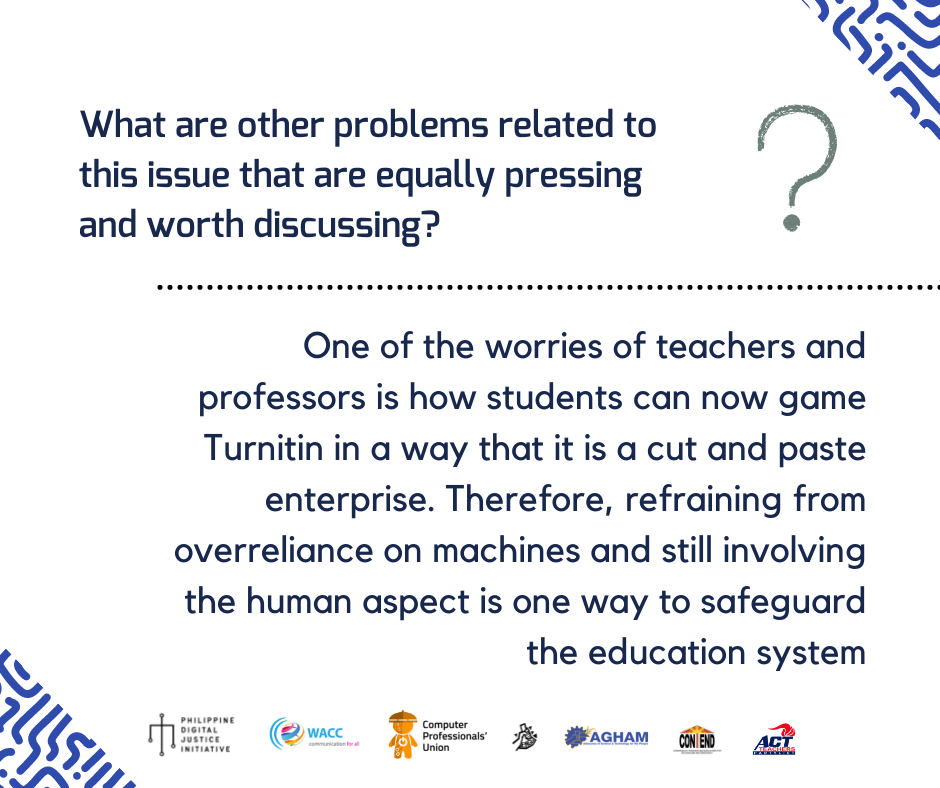
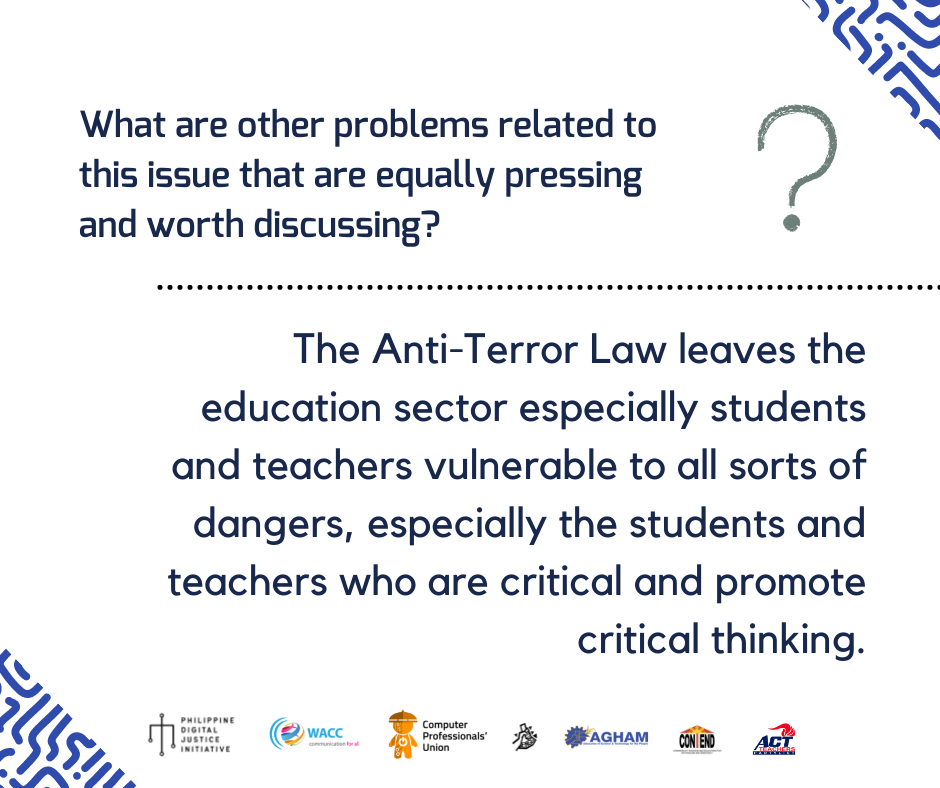
Rise of Misinformation
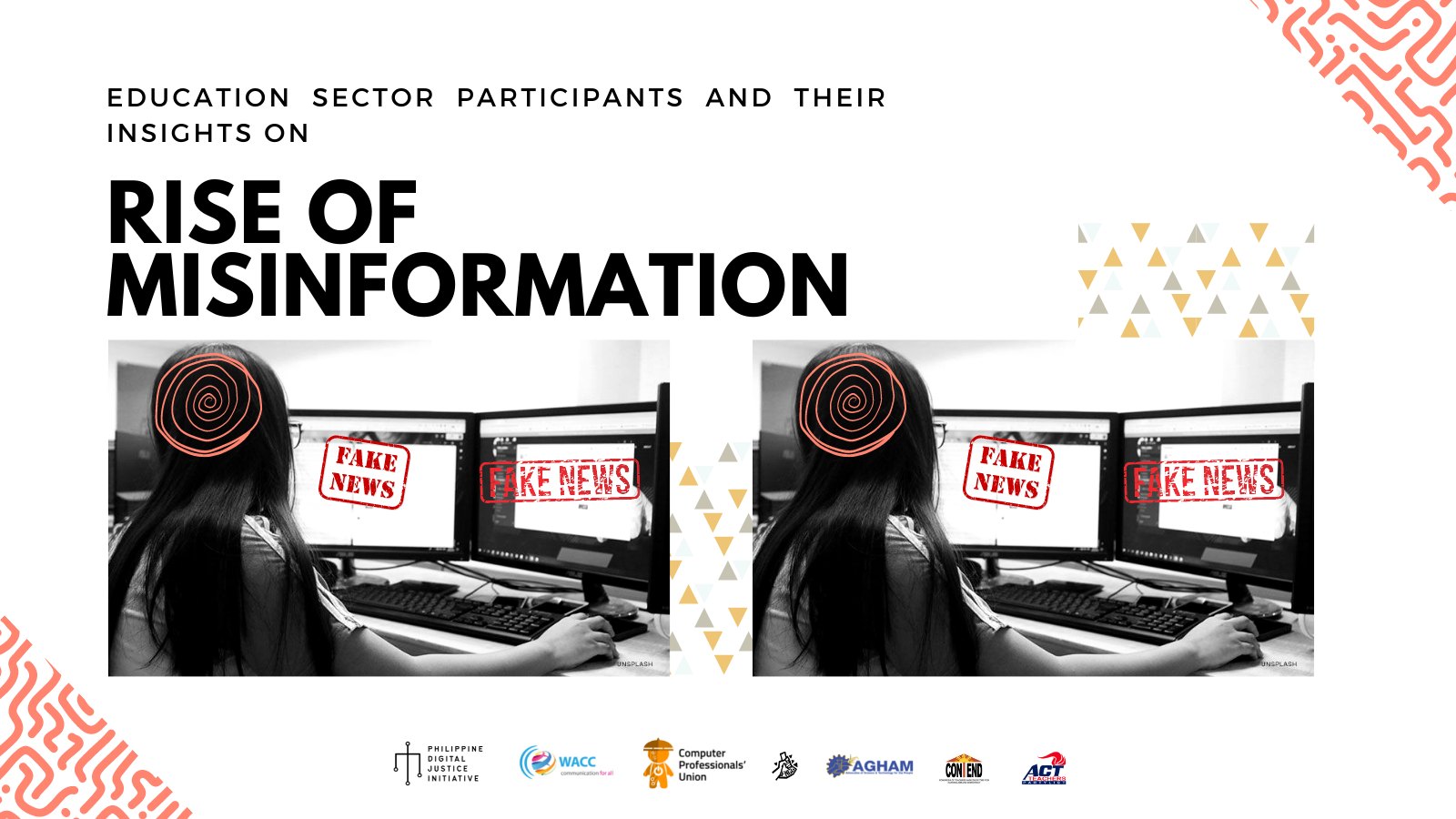
The quick and instant access to and creation of a plethora of information is one of the benefits that the internet has brought to people, which is unfortunately still unavailable to approximately 3.7 billion people around the world. And because of its availability to a wide array of people who have access to the internet, misinformation can be easily created and consumed by a lot of people as well. Trolls and fake news have become a common thing in the Philippine social media, for instance. With Filipinos becoming exposed to the digital world more than ever due to the pandemic, how does the education sector face the challenges of misinformation and other related issues to it? What are the possible solutions that can be done to immediately and effectively address these?
What are the major concerns that the education sector has encountered regarding the spread of misinformation online for the past few years? Did the shift to more online activities that the pandemic brought affect this issue?
Misinformation is part of the overall information ecosystem, and education is just one aspect of it. With education, you can verify things. Only outside the boundaries of education where the misinformation becomes dangerous and weaponized, as it is used as a tool to vilify political dissent. Misinformation can be easily detected within the education sector—the real callenge exists outside the education system.
In worst cases, the Department of Education, the government agency that should ensure that quality education should be accessible for everyone, becomes and extension to spread misinformation and red-tag people—the Lumad Bakwit schools are the most popular example.

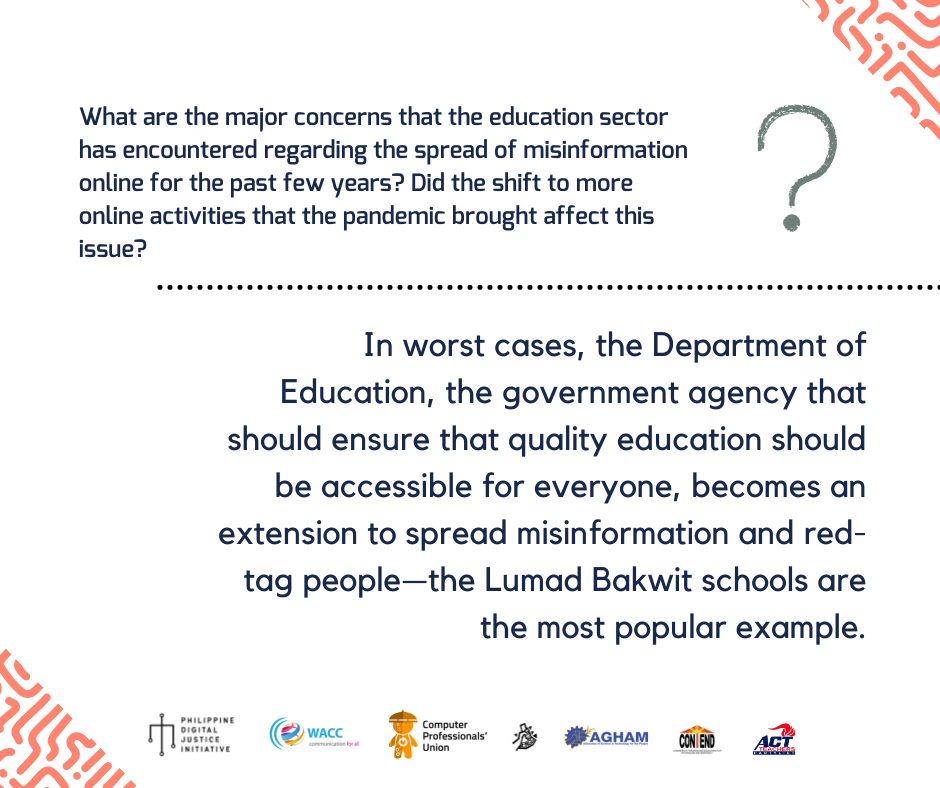
How do people from the education sector address these issues? Can you cite few examples that have demonstrated the adverse effects of the said issue on students, teachers, and other members of the education sector?
Facebook has third-party checkers whose main goal is to censor politicians. With these fact-checkers, there are pages that are getting flagged. However, despite the presence of fact-checkers, politically suspiciuos pages still exist and appear in slightly different formats.
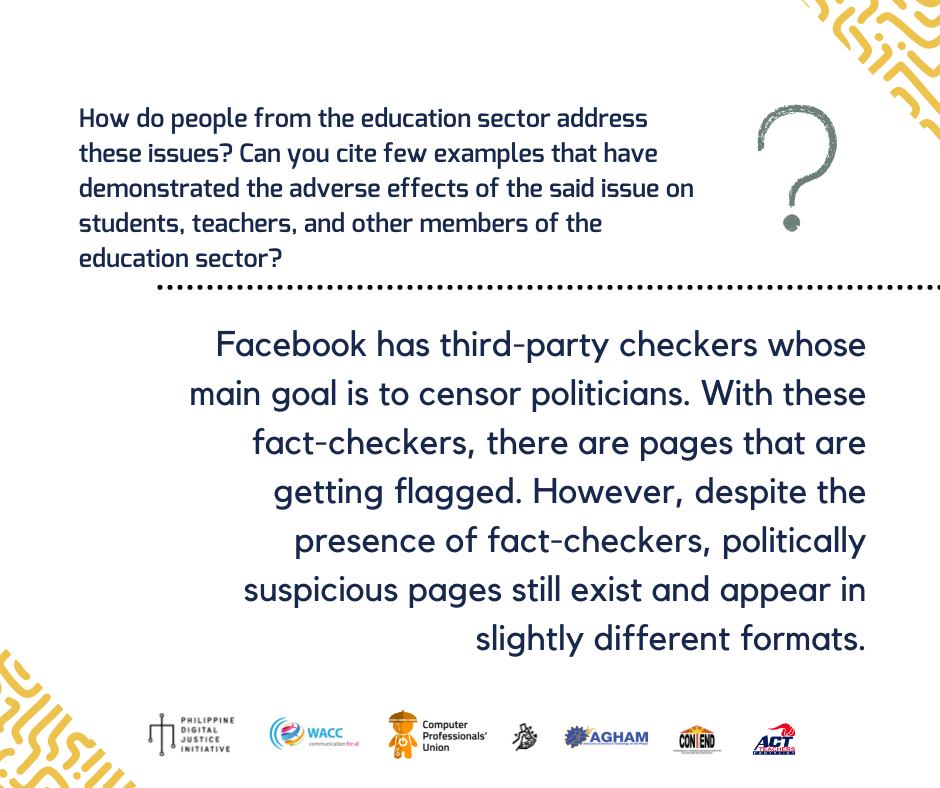
What are the short-term and long-term solutions that you can recommend to address this issue?
Facebook ought to have an active humanitarian role to combat misinformation as it became a very popular online platform and a digital public space for many people, especially Filipinos whose only means to connect online is through the said social media platform.

What are the problems related to this issue that are equally pressing and worth discussing?
A study on “pandemic learning” in the context of the Filipino education sector and society should be initiated as a means to address the existing problems of students and teachers with the “new normal”.
